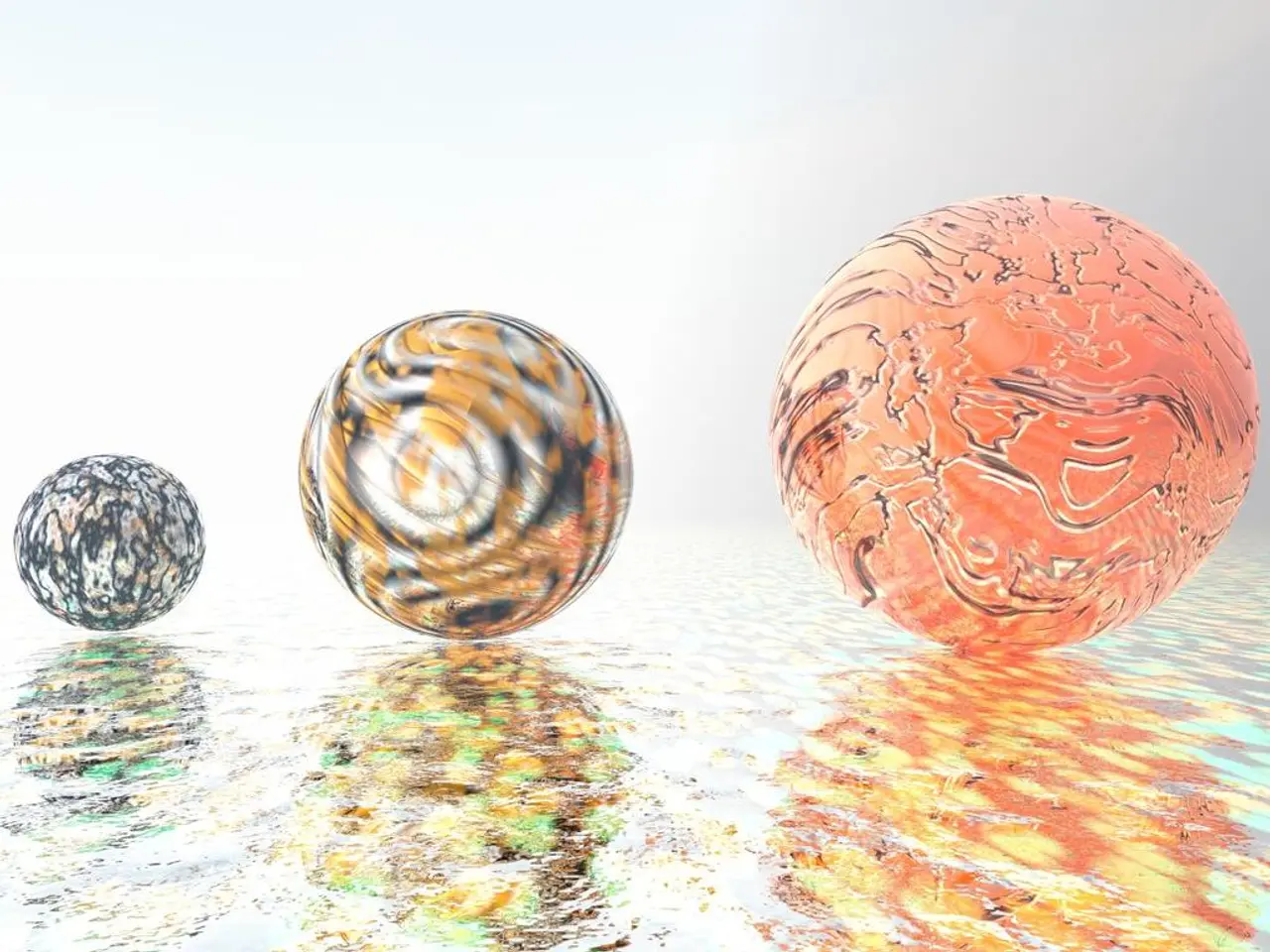Da Vinci's Enigma Unveiled: The Triangle Concealed in the Vitruvian Man, a 500-year-old artwork
For centuries, Leonardo da Vinci's Vitruvian Man has been admired for its precise mathematical ratios and intricate geometric patterns. Recently, a groundbreaking study by London dentist Rory Mac Sweeney has shed new light on this iconic drawing, revealing that it incorporates the tetrahedral ratio - a geometric constant related to the optimal packing of spheres in a pyramid formation.
The Vitruvian Man aligns with an optimal balance found in crystals, biological structures, and Fuller's coordinate systems due to the integration of the tetrahedral ratio. This ratio, recognized formally only in 1917, describes the height-to-base relationship of four spheres packed tightly in a tetrahedral shape.
In the Vitruvian Man, when the figure’s legs are spread and arms raised so that the fingertips touch the top of the head, the space formed between the legs creates an equilateral triangle. The ratio between the spread of the feet and the height of the navel closely matches the tetrahedral ratio.
This discovery reframes da Vinci as more than an artist and mathematician; it indicates he intuitively grasped a fundamental physical principle underlying natural and biological structures. His use of the tetrahedral ratio in the Vitruvian Man suggests that his proportions were not merely artistic but deeply inspired by universal geometric principles governing natural forms.
The equilateral triangle, long considered a decorative element, is now seen as an integral part of the human form in the Vitruvian Man. Mac Sweeney's interpretation of da Vinci's notes reveals that this triangle is a key to understanding the proportions of the figure.
Implications of this discovery include:
- Da Vinci as a proto-scientist who encoded laws of universal geometry and natural efficiency into human proportions.
- The Vitruvian Man becomes a symbolic representation not just of ideal human beauty but of a universal geometric law uniting human form with natural and cosmic order.
- It suggests that human anatomy exhibits fractal-like repetition of optimal geometric arrangements found in physical reality, bridging art, science, and physics.
Mac Sweeney's findings, detailed in the Journal of Mathematics and the Arts, could reshape our understanding of da Vinci's methods and his grasp of geometry. The study proposes that human anatomy, like crystals and other biological systems, may be designed to maximize efficiency through geometric forms that are inherently balanced.
This revelation opens the door to understanding da Vinci's work as a mathematical revelation, not just an artistic one. The equilateral triangle hidden in the Vitruvian Man holds the key to understanding one of the most cryptic works in art history, according to Mac Sweeney. His research suggests that the Vitruvian Man may not be linked to the Golden Ratio as previously thought, but rather to an equilateral triangle hidden within it.
In summary, the incorporation of the tetrahedral ratio into the Vitruvian Man reveals Leonardo da Vinci’s work as pioneering in expressing universal geometric harmony that connects the human body with fundamental structural constants of nature.
- The study by London dentist Rory Mac Sweeney connects the Vitruvian Man to universal geometric harmony, suggesting that Leonardo da Vinci may be seen as a proto-scientist who encoded laws of universal geometry.
- The equilateral triangle hidden in the Vitruvian Man could reshape our perspective on this iconic drawing, positioning it as a symbolic representation of not just ideal human beauty but a universal geometric law uniting human form with natural and cosmic order, reflecting health and wellness principles and the advancements in technology related to the study of such harmonies.




